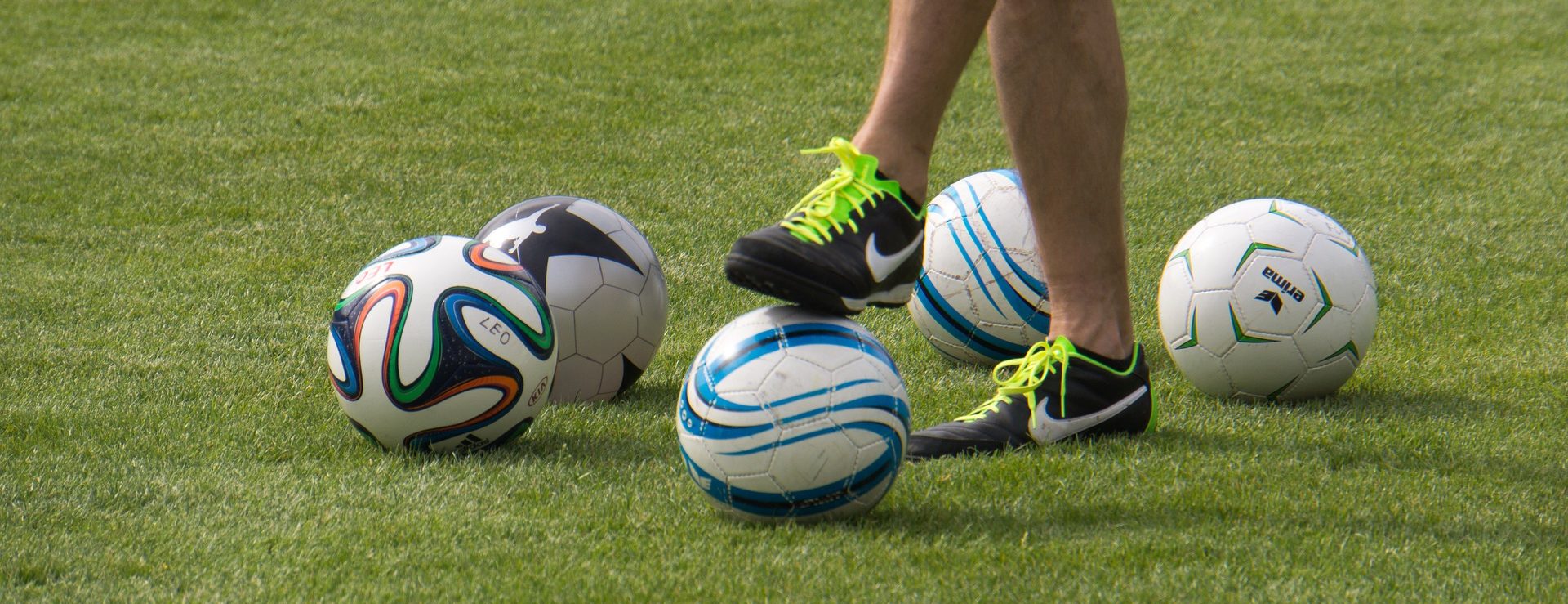
Soccer is a sport loved by millions worldwide. It’s a game that brings people together, fosters teamwork, and ignites passion like no other. But if you’re new to the game, grasping all the rules and nuances can be overwhelming. Below you’ll a few of the basics as well as links to the various rules in soccer.















First things first, let’s talk about the size of the playing field. A regulation soccer field is rectangular in shape, measuring between 100 and 120 yards long and 70 to 80 yards wide. The field is divided into two halves by the halfway line, with a center circle marking the middle of the pitch. At each end of the field, you’ll find a goal area with two rectangular boxes – the smaller one is the goal box, and the larger one is the penalty box. The goal lines mark the end of the field, while the touchlines run along the sides. In each corner, you’ll see a corner flag, which comes into play during corner kicks.
A professional soccer game consists of two teams, each with a maximum of eleven players on the field at a time. The exact positions and composition can vary, but a typical lineup includes 1 goalkeeper – 4 defenders – 4 midfielders – and 2 forwards. The goalkeeper is the only player allowed to handle the ball within their own penalty box. Their primary role is to prevent the opposing team from scoring. Field players, on the other hand, are tasked with both attacking and defending roles. Defenders aim to stop the opposing team’s attacks, midfielders link play between defense and attack, and forwards are responsible for creating and scoring goals.
Soccer doesn’t require a lot of equipment, but play safely and effectively; there is some gear that players must wear. The most basic soccer rules state that each player must have:
The shin guards are particularly important, as they protect players from potential injuries during tackles and challenges. I’ve experienced tackles so hard that my shin guards broke. Imagine if I was wearing them! Most leagues will require shinguards for all players.
Goalkeepers must wear colors that distinguish them from other players and the referees. This helps avoid confusion on the pitch. They also typically wear goalie gloves to protect their hands.
Soccer is a game of moments. From the first whistle to the final score, every second counts. As a fan and player for over four decades, I’ve witnessed my fair share of unforgettable plays and heart-stopping finishes. But what are the key moments that define a soccer match?
The objective of soccer is quite simple: score more goals than your opponent. A goal is scored when the ball completely crosses the goal line between the goalposts and under the crossbar. It is important to understand that the ball must “completely cross” the line. There has been much drama about this throughout the history of the beautiful game. In the end, the ref always had the final decision, even if he was not in a position to really see it. Today, though, we have VAR and goal-line technology that has reduced the amount of confusion and drama about close goals.
The team with the most goals at the end of the match is declared the winner. If both teams have scored an equal number of goals, the game ends in a draw. They proceed over time if the game is a knockout match or requires a winner. If still there is no winner, a penalty shootout will be used to determine a winner.
Scoring a goal is not a simple feat. It requires skill, precision, and often a bit of luck. That’s why goals are celebrated so passionately. They’re the culmination of a team’s hard work and determination. There’s no better feeling than seeing the ball hit the back of the net. The rush of adrenaline, the roar of the crowd, the hugs from your teammates – it’s what we live for.
Even if you don’t score, every moment on the pitch is an opportunity to make a difference. A perfectly timed tackle, a clever pass, a brave header – these are the moments that can turn the tide of a match. So the next time you watch a soccer game, pay attention to the little moments. They may not make the highlight reel, but they’re what make this sport so beautiful.
Soccer may be known as “the beautiful game,” but it’s not always pretty. Fouls and penalties are an inevitable part of the sport, and understanding them is crucial for players, coaches, and fans alike. Fouls in soccer can range from minor infractions to serious offenses.
Some common fouls include:
When a foul is committed, the referee will stop play and award a free kick to the opposing team. Depending on the severity of the foul, the referee may also take disciplinary action against the offending player. Yellow cards are shown as a warning for reckless or unsporting behavior, while red cards are reserved for serious offenses like violent conduct or denying an obvious goal-scoring opportunity. A player who receives two yellow cards in the same match will also be shown a red card and sent off.
One of the most dramatic moments in soccer is the penalty kick. A penalty kick is awarded when a player commits a foul inside their own penalty box or when a handball offense occurs inside the box. As a lifelong center-back, I have given up my share of penalty kicks. It’s something that is in the back of your mind when you are defending or making a tackle in the box. Make sure you get it right so you don’t give up a penalty!
During a penalty kick, the ball is placed on the penalty spot, 12 yards (11 meters) from the goal line. All players except the kicker and the goalkeeper must be outside the penalty box and at least 10 yards away from the ball (This is why there is a circle at the top of the penalty box).
The goalkeeper must remain on the goal line until the ball is kicked. If the goalkeeper moves off the line or the kicker stops in their run-up, the referee may order the kick to be retaken. A penalty kick is a golden opportunity for the attacking team to score, as it’s just a one-on-one situation between the kicker and the goalkeeper.
It’s also a moment of immense pressure, as the match’s fate can often hang in the balance. It’s a split-second decision that can go either way. That’s what makes penalty kicks so thrilling – and so nerve-wracking.
Fouls and penalties may not be the most glamorous part of soccer, but they’re an essential part of the game. They add an element of drama and unpredictability that keeps us on the edge of our seats. So the next time you see a player go down in the box or a referee reach for their pocket, remember: it’s all part of the beautiful chaos that is soccer.




As an Amazon Associate we earn from qualifying purchases.